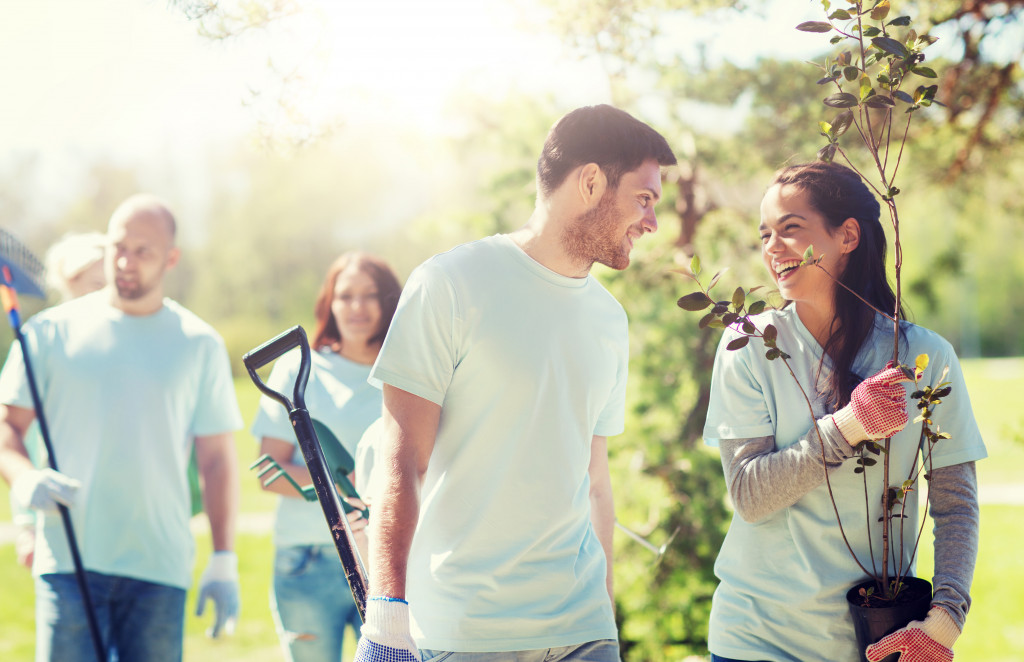A garden is a great way to bring people together in a community or townhouse. It can provide a space for people to gather and socialize, as well as a place to grow fruits and vegetables. Gardens can also help improve an area’s appearance, making residents feel more pride in their community.
Studies have shown that gardens can have a positive impact on the environment and the health of residents. A garden can help reduce stress, improve mental health, and increase physical activity. Gardens can also benefit the economy by creating jobs and boosting tourism.
There are many reasons why gardens are important in communities and townhouses. Community gardens provide a space for people to gather and socialize, improve the appearance of an area, they help reduce stress levels, improve mental health, increase physical activity, and benefit the economy.
However, building a community garden will not be as straightforward as doing it in your backyard. There will be plenty of factors involved, including these essential steps.
Securing the Proper Permits
Creating a community garden will require a lot of resources, materials, people, and money. However, you cannot start working on procuring the list when you do not have the green light from the local authorities. You first need to check with your town or city’s zoning regulations to see if starting a community garden is allowed in the area.
You will need to secure a few permits before starting to work on the project. The first permit is a business license, allowing you to operate as a non-profit organization. You will also need a Certificate of Liability Insurance, which will protect you and your team from any potential accidents that might happen during the construction of the garden.
Securing all the permits needed to start the project might take a while. But once you have everything in place, you can start working on building the garden.
Gather the Necessary Personnel and Supplies
Now that you have the permits to start the project, it is time to gather the necessary personnel and supplies. Depending on the garden size, you might need a team of volunteers to help with the construction. You will also need to purchase some gardening supplies, such as soil, seeds, fertilizer, gardening tools, and an irrigation system.
Many community gardens serve as playgrounds for kids within the neighborhood. As a result, the grass bed should replicate the durability and softness of a typical playground. The best way to achieve this is to use recycled tires because they are durable and eco-friendly. Gardening can also be good for kids, making them ideal volunteers for the project.
Community gardens should also be full of life, making plants necessary. However, ample space might require more vital fertilizers to provide enough nutrients for growth. Fortunately, large pine bark nuggets are more natural and potent than mulch for a community garden.
You can also use other materials, such as wood chips, gravel, or sand, to create a soft surface for the garden. Once you have gathered all the necessary supplies, you can start working on building the park.
Design and Build the Garden
The next step is to design and build the garden. Depending on the size of the area, you might want to consider making raised beds or using containers. You will also need to decide what plants you want to grow in the garden.
Working with a small space, you can use containers or raised beds to grow your plants. This will allow you to maximize the space and prevent the roots from spreading too far. You can also use trellises or other support structures to grow vines or climbing plants.

Once you have designed the garden, it is time to start building it. If you use raised beds, you must create them before adding soil and plants. You can build the beds with wood, concrete blocks, or bricks. Once they are made, you can add soil and plants.
If you use containers, fill them with the potting mix before adding plants. Once the containers are filled, you can add plants and water them.
Once the garden is built, you can start planting seeds or seedlings. You will need to water the plants regularly and fertilize them as needed. You might also need to prune the plants to keep them healthy.
Final Thoughts
The community garden can be a flexible space for the local neighborhood. It can be a place where people can grow their food or enjoy the outdoors. It can also be home to community events and an imaginary playground for children.
Before starting a community garden project, there are a few things you need to consider, such as securing permits and gathering supplies. You will also need to design and build the garden. Once the park is created, you can start planting seeds or seedlings.
Water the plants regularly and fertilize them as needed. You might also need to prune the plants to keep them healthy. By following these steps, you can ensure that your community garden is successful.

